Please use the following link to download the June 21, 2025 issue of the syəcəb
Author: Kim Kalliber
Aiden in the Outfield

By Micheal Rios, Tulalip News
Lakewood High School senior Aiden Jones made sure to leave a lasting impression in his final season wearing Cougar maroon and gold. The powerful right fielder put together a standout year at the plate and in the field, earning second team All-Northwest Conference honors and drawing interest from college programs eager to add his bat to their roster.
“Aiden brings so much to our team. He’s a strong presence in the lineup, in the field, and in the dugout,” said Lakewood head coach Jackson Conn. “His strength is quite literal, he’s a strong kid with a massive arm, but he’s also mentally strong. His leadership, discipline and patience set him apart as a senior and team captain. He’s worked with our team’s underclassmen all year long and been invaluable to us coaches in teaching those on and off the field skills.”
Aiden, known around the league for his smooth right-handed swing and clutch hitting, wrapped up his senior campaign with an impressive .371 batting average and .429 on-base percentage. According to Max Preps, he amassed 23 hits, 22 RBI’s and scored 11 runs to round out one of the most complete offensive seasons in recent Lakewood history.

“I was fortunate to coach Aiden all four years he played at Lakewood. I witnessed his growth and progression from his freshman year to his senior year,” said Coach Conn. “He had so many great games for us, but the moment that stands out most for me as his coach was when he hit his first homerun here at home. He worked so hard in the offseason and really put the time in weight room to pack on lean muscle and take his power to the next level. Then to see all that hard work pay off when he hit that homerun off one of the best pitcher’s in our conference. It looked like he was floating around the bases. He was so excited and the rest of the team was so excited for him.”
From opening day to the team’s final out, Aiden approached every opportunity with composed confidence while serving as the Cougars’ most dangerous hitter. Batting in the cleanup spot, he consistently delivered in key moments, including clutch at bats in rivalry wins over both Sedro-Woolley and Squalicum. Perhaps his most memorable moment, or just his grandparents’ favorite one, was blasting a homerun off his Louisville Slugger Atlas in the final game of the season vs. Lynden.

“Baseball gives you a lot of life lessons,” explained the hard-hitting, 18-year-old Tulalip tribal member. “In this game, you fail a lot more than you succeed. For example, there are Hall of Fame players who averaged 3 for 10 at the plate. This translates to the real world because everyone is waiting for opportunities to succeed, but when those opportunities come, are you prepared to capitalize? And when you strikeout, because we all do, how do you respond to the next opportunity?”
His ability to capitalize on his opportunities by tracking pitches and delivering extra-base hits made him a fixture in the heart of Lakewood’s lineup and a constant threat to opposing pitchers. While his offensive numbers often started conversations, Aiden was just as dependable defensively as an everyday right fielder. He showcased strong range, reliable hands, and a sharp throwing arm, recording multiple assists—including several run-saving throws enroute to a whopping .900 fielding percentage.
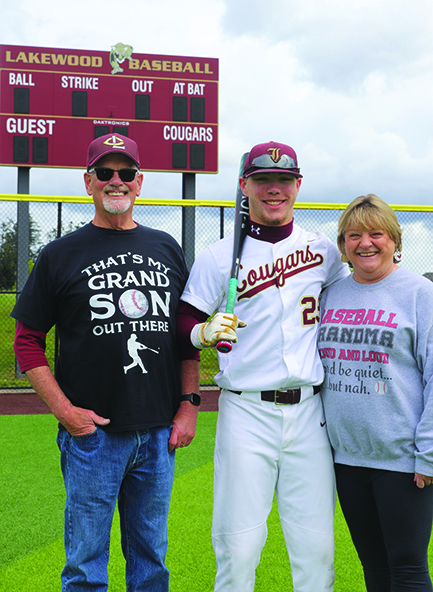
“I play with great confidence, regardless of who is pitching or who is at bat,” asserted the six-foot, two-hundred-pound Aiden who is all muscle and pure testosterone. “At the end of the day, this is just a game, but it’s a game I’ve prepared myself to play at the highest level. I lift six days a week in the offseason, hit the batting cages 3 days a week, and spend a couple hours as often as I can studying the greats. I watch film of the best players to study their mechanics and learn from their professional habits.”
Aiden’s complete skill set and strong academic record has started to open doors at the next level. College coaches from across the Northwest and California reached out to him during his stellar senior year. With his high school days now behind him and an entire summer of recruitment opportunities in front of him, Aiden is steadfast on waiting for the perfect pitch before committing his bat to any collegiate program.
Once he commits to a college, he’ll be fulfilling a dream that was manifested nearly two decades ago when a new born Aiden attended his first baseball. His grandparents, Pam and Butch Blount, recall a month’s old Aiden taking in the sights and sounds of the game while cheering on their son Cody, Aiden’s uncle, playing select ball.

“Raising our grandson has been amazing,” said grandmother Pam while rocking a pair of custom-made earrings that have Aiden’s name and jersey number on them. “We’ve shuttled him back and forth from so many practices, games, tournaments and training facilities that it’s impossible to remember a time when he didn’t have baseball in his life. He’s put his whole heart and soul into this game and into becoming the best player he can be.
“Of course, we want him to play college ball somewhere somewhat local so we can continue to watch him play,” she added. “Wherever he decides to go, we know he’ll continue to push himself to be great and to take this game as far as he can take it.”

With his graduation just days in the rearview mirror, Aiden’s high school career comes to a close. He leaves behind a legacy of hard work, big swings, and bigger moments. For Lakewood Cougar’s baseball, #23’s impact won’t soon be forgotten. And for college scouts, the best may be yet to come.
Rez Reads: 2025 Summer Edition
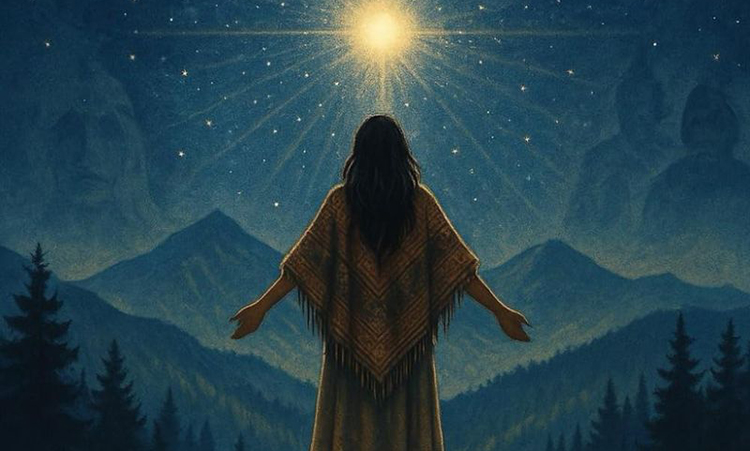
By Kalvin Valdillez, Tulalip News
It’s officially summertime! And it’s time to sit back and unwind with a good book while you catch some rays. With an eventful summer planned at Tulalip, we highly recommend scooping up at least one of these books to check out during your downtime.
This selection is comprised of ten books that range from beautifully written poems, heartbreaking memoirs, romance novels, to thrillers. But no matter the genre, within in the pages of these stories, you will find the authors baring their souls, while sharing their languages and their heritage, as they open up about difficult topics such as generational trauma and navigating today’s colonized society as Native People.
Many of these books were released within the past few weeks, with the exception of the last three, which are set to launch this summer. We have included the book jacket summary for each, so you can get a feel for the story before purchasing. And we are pleased and honored to kick-off this Rez Reads segment with Tulalip’s own, SummerLee Blankenship. Happy reading!
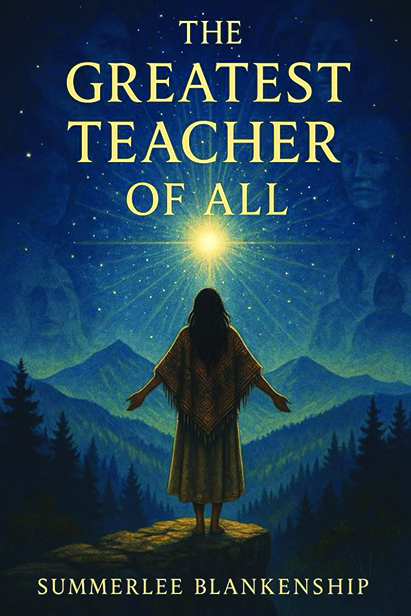
The Greatest Teacher of All by SummerLee Blankenship (Tulalip)
What if your rock bottom was actually the beginning of your rebirth?
In The Greatest Teacher of All, SummerLee Blankenship shares her raw and powerful true story—from addiction, trauma, and deep loss to awakening, healing, and spiritual transformation. As a Native American woman carrying generational pain, she walks the long road home to herself through plant medicine, ceremony, and divine guidance.
This isn’t just a memoir—it’s a testimony of survival, soul reclamation, and the sacred wisdom found in life’s darkest moments. With brutal honesty and poetic grace, SummerLee invites readers into the depths of her journey and shows us that even in our most broken state, we are never beyond redemption.
For anyone who has felt lost, alone, or unloved—this book is your mirror, your medicine, and your reminder that healing is possible.

Blue Corn Tongue: Poems in the Mouth of the Desert by Amber McCray
In a voice that is jubilant, irreverent, sometimes scouring, sometimes heartfelt, and always unmistakably her own, Amber McCrary remaps the deserts of Arizona through the blue corn story of a young Diné woman figuring out love and life with an O’odham man. Reflecting experiences of Indigenous joy, pain, and family, these shapeshifting poems celebrate the love between two Native partners, a love that flourishes alongside the traumas they face in the present and the past. From her ethereal connection with her saguaro muse, Hosh, to the intricate tapestry of her relationships with Diné relatives and her awakening to the complex world of toxic masculinity, McCrary brings together DIY zine aesthetics, life forms of juniper and mountains, and the beauty of Diné Bizaad to tell of the enduring bonds between people and place.
Journeying from the Colorado Plateau to the Sonoran Desert and back again, Blue Corn Tongue invokes the places, plants, and people of Diné Bikéyah and O’odham jeweled in a deeply honest exploration of love, memory, and intimacy confronting the legacy of land violence in these desert homelands

We Can Never Leave by H.E. Edgmon
You can never go home…
Every day, all across the world, inhuman creatures are waking up with no memory of who they are or where they came from–and the Caravan exists to help them. The traveling community is made up of these very creatures and their families who’ve acclimated to this new existence by finding refuge in each other. That is, until the morning five teenage travelers wake to find their community has disappeared overnight.
Those left: a half-human who only just ran back to the Caravan with their tail between their legs, two brothers–one who can’t seem to stay out of trouble and the other who’s never been brave enough to get in it, a venomous girl with blood on her hands and a heart of gold, and the Caravan’s newest addition, a disquieting shadow in the shape of a boy. They’ll have to work together to figure out what happened the night of the disappearance, but each one of the forsaken five is white knuckling their own secrets. And with each truth forced to light, it becomes clear this isn’t really about what happened to their people–it’s about what happened to them.
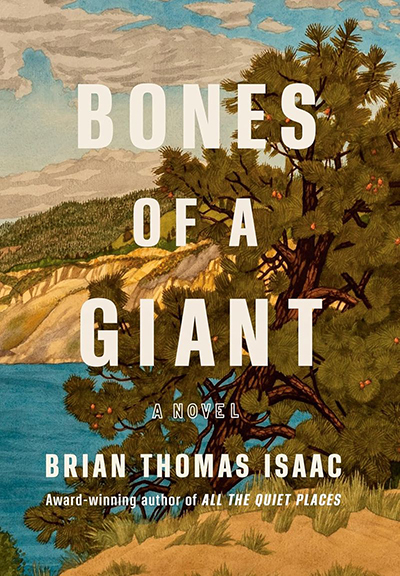
Bones of a Giant by Brian Thomas Isaac
From the award-winning, bestselling author of All the Quiet Places, comes Brian Thomas Isaac’s highly anticipated, haunting and tender return to the Okanagan Indian Reser.ve and a teenager’s struggle to become a man in a world of racism and hardship.
Summer, 1968. For the first time since his big brother, Eddie, disappeared two years earlier—either a runaway or dead by his own hand—sixteen-year-old Lewis Toma has shaken off some of his grief. His mother, Grace, and her friend Isabel have gone south to the United States to pick fruit to earn the cash Grace needs to put a bathroom and running water into the three-room shack they share on the reserve, leaving Lewis to spend the summer with his cousins, his Uncle Ned and his Aunt Jean in the new house they’ve built on their farm along the Salmon River. Their warm family life is almost enough to counter the pressures he feels as a boy trying to become a man in a place where responsible adult men like his uncle are largely absent, broken by residential school and racism. Everywhere he looks, women are left to carry the load, sometimes with kindness, but often with the bitterness, anger and ferocity of his own mother, who kicked Lewis’s lowlife father, Jimmy, to the curb long ago.
Lewis has vowed never to be like his father—but an encounter with a predatory older woman tests him and he suffers the consequences. Worse, his dad is back in town and scheming on how to use the Indian Act to steal the land Lewis and his mom have been living on. And then, at summer’s end, more shocking revelations shake the family, unleashing a deadly force of anger and frustration.
With so many traps laid around him, how will Lewis find a path to a different future?
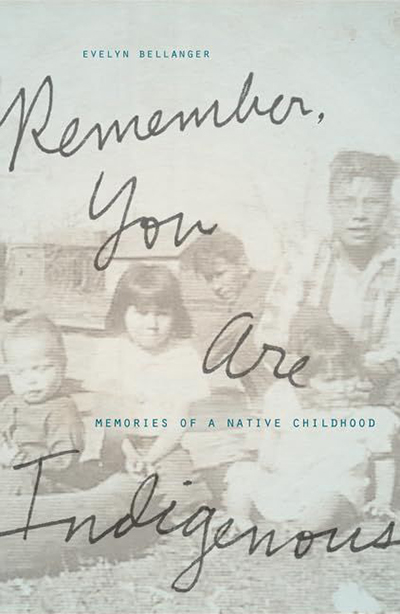
Remember, You Are Indigenous: Memories of a Native Childhood by Evelyn Bellanger
A respected elder shares stories. and insights from growing up on the White Earth Reservation in Minnesota
With unflinching honesty, Evelyn Bellanger tells a vivid account of her childhood in Pine Point, Minnesota, and relates her experiences to the networked histories of marginalization and oppression faced by Indigenous people in the United States. As Bellanger connects her later activist work to her early memories, Remember, You Are Indigenous emphasizes the implications of intergenerational trauma as well as the strength of community.
Grounding her narrative in the pre-colonization history of the Anishinaabeg and the environmental damages wrought by land developers, lumber companies, and the U.S. Army Corps of Engineers, Bellanger invites readers into her family’s history, weaving stories of her mother, father, and grandmother into her own. She pays careful attention to the seasonality of life and the natural world as she remembers harvesting wild rice by canoe with her family, and she observes social inequities while recalling her time at the Minnesota Home School for Girls state juvenile facility.
Through stories tragic and humorous, Evelyn Bellanger’s voice shines. Her impressionistic style offers authenticity and intimacy as she describes the early experiences that have shaped her work as a leader and activist.

Old School Indian: A Novel by Aaron John Curtis
A coming-of-middle-age novel about an Ahkwesáhsne man’s reluctant return home and what it takes to heal.
Abe Jacobs is Kanien’kehá:ka from Ahkwesáhsne , as white people say, a Mohawk Indian from the Saint Regis Tribe. At eighteen, Abe left the reservation where he was raised and never looked back.
Now forty-three, Abe is suffering from a rare disease – one his doctors in Miami believe will kill him. Running from his diagnosis and a failing marriage, Abe returns to the Rez, where he’s persuaded to undergo a healing at the hands of his Great Uncle Budge. But Budge – a wry, recovered alcoholic prone to wearing punk T-shirts – isn’t all that convincing. And Abe’s time off the Rez has made him a thorough skeptic.
To heal, Abe will undertake a revelatory journey, confronting the parts of himself he’s hidden ever since he left home and learning to cultivate hope, even at his darkest hour.
Delivered with crackling wit, Old School Indian is a striking exploration of the power and secrets of family, the capacity for healing and catharsis, and the ripple effects of history and culture.
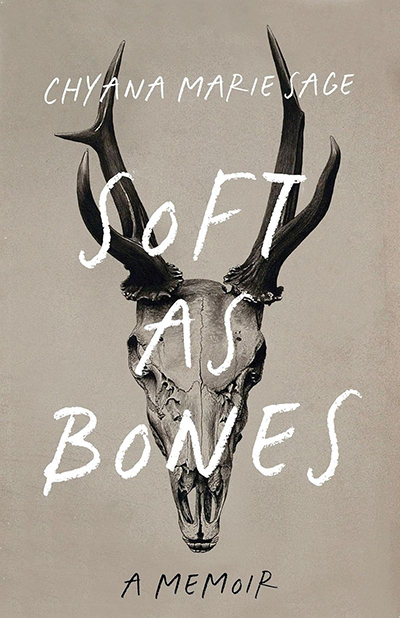
Soft as Bones: A Memoir by Chyana Marie Sage
A poetic memoir as intricately woven as a dreamcatcher about overcoming the pain of generational trauma with the power of traditional healing. In her deeply affecting memoir, Soft as Bones, Chyana Marie Sage shares the pain of growing up with her father: a crack dealer who went to prison for molesting her older sister. She details the shame and guilt she carried for years after her family’s trauma as she went from one dysfunctional relationship to another, from one illegal drug to another. In revisiting her family’s history and weaving in the perspectives of her mother and sisters, Chyana examines the legacy of generational abuse, which began with her father’s father, who was forcibly removed from his family by the residential schools and Sixties Scoops programs.
Yet hers is also a story of hope, as it was the traditions of her people that saved her life. In candid, incisive, and delicate prose, Chyana braids personal narrative with Cree stories and ceremonies, all as a means of healing one small piece of the mosaic that makes up the dark past of colonialism shared by Indigenous people throughout Turtle Island.
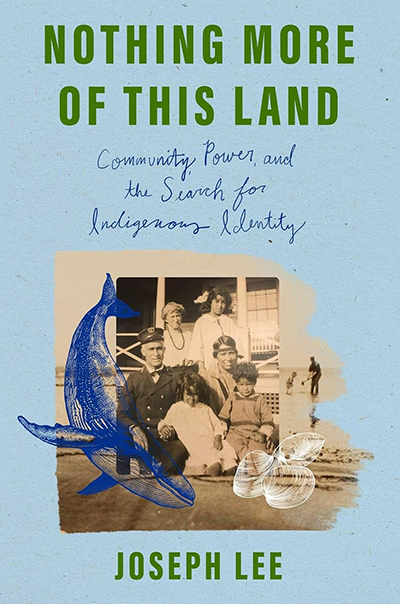
Nothing More of this Land: Community, Power, and the Search for Indigenous Identity by Joseph Lee Release Date: July 15
From award-winning journalist Joseph Lee, a sweeping, personal exploration of Indigenous identity and the challenges facing Indigenous people around the world.
Before Martha’s Vineyard became one of the most iconic vacation destinations in the country, it was home to the Wampanoag people. Today, as tourists flock to the idyllic beaches, the island has become increasingly unaffordable for tribal members, with nearly three-quarters now living off-island. Growing up Aquinnah Wampanoag, journalist Joseph Lee grappled with what this situation meant for his tribe, how the community can continue to grow, and more broadly, what it means to be Indigenous.
In Nothing More of This Land, Lee weaves his own story and that of his family into a panoramic narrative of Indigenous life around the world. He takes us from the beaches of Martha’s Vineyard to the icy Alaskan tundra, the smoky forests of Northern California to the halls of the United Nations, and beyond. Along the way he meets activists fighting to protect their land, families clashing with their own tribal leaders, and communities working to reclaim tradition.
Together, these stories reject stereotypes to show the diversity of Indigenous people today and chart a way past the stubborn legacy of colonialism.

Love is a War Song by Danica Nava
Release Date July 22
A Muscogee pop star and a cowboy who couldn’t be more different come together to strike a deal in this new romantic comedy by Danica Nava, USA Today bestselling author of The Truth According to Ember.
Pop singer Avery Fox has become a national joke after posing scantily clad on the cover of Rolling Stone in a feather warbonnet. What was meant to be a statement of her success as a Native American singer has turned her into a social pariah and dubbed her a fake. With threats coming from every direction and her career at a standstill, she escapes to her estranged grandmother Lottie’s ranch in Oklahoma. Living on the rez is new to Avery—not only does she have to work in the blazing summer heat to earn her keep, but the man who runs Lottie’s horse ranch despises her and wants her gone.
Red Fox Ranch has been home to Lucas Iron Eyes since he was sixteen years old. He has lived by three rules to keep himself out of trouble: 1) preserve the culture, 2) respect the horses, and 3) stick to himself. When he is tasked with picking up Lottie’s granddaughter at the bus station, the last person he expected to see is the Avery Fox. Lucas can’t stand what she represents, but when he’s forced to work with her on the ranch, he can’t get her out of his sight—or his head. He reminds himself to keep to his rules, especially after he finds out the ranch is under threat of being shut down.
It’s clear Avery doesn’t belong here, but they form a tentative truce and make a deal: Avery will help raise funds to save the ranch, and in exchange, Lucas will show her what it really means to be an Indian. It’s purely transactional, absolutely no horsing around…but where’s the fun in that?
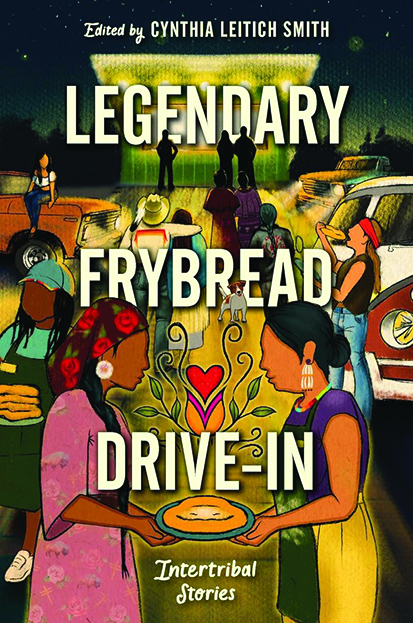
Legendary Frybread Drive-In: InterTribal Stories by Various Authors
Release Date: August 26
Featuring the voices of both new and acclaimed Indigenous writers and edited by bestselling Muscogee author Cynthia Leitich Smith, this collection of interconnected stories serves up laughter, love, Native pride, and the world’s best frybread.
The road to Sandy June’s Legendary Frybread Drive-In slips through every rez and alongside every urban Native hangout. The menu offers a rotating feast, including traditional eats and tasty snacks. But Sandy June’s serves up more than food: it hosts live music, movie nights, unexpected family reunions, love long lost, and love found again.
That big green-and-gold neon sign beckons to teens of every tribal Nation, often when they need it most.
Featuring stories and poems by: Kaua Mahoe Adams, Marcella Bell, Angeline Boulley, K. A. Cobell, A. J. Eversole, Jen Ferguson, Eric Gansworth, Byron Graves, Kate Hart, Christine Hartman Derr, Karina Iceberg, Cheryl Isaacs, Darcie Little Badger, David A. Robertson, Andrea L. Rogers, Cynthia Leitich Smith, and Brian Young.
Royals stun Jetts with last-second touchdown in thrilling playoff battle

By Wade Sheldon, Tulalip News
A warm and golden summer evening set the perfect stage for semi-pro playoff football at Quil Ceda Stadium on Saturday, June 14, as the Everett Royals clashed with the Federal Way-based King County Jetts. Over 60 fans filled the bleachers under the Marysville-Pilchuck sunset, cheering for a game packed with grit, heart, and late-game heroics.
The game opened with nerves on both sides. The Royals fumbled on their first possession, handing the Jetts early momentum. What followed was a defensive slugfest, featuring a staggering six total turnovers in the first half alone. The Jetts finally broke through to take a 6-0 lead—one they carried into halftime as both offenses struggled to find rhythm.

Tulalip Tribal member #16, Timothy Hill Thomas, made an early impact, recovering a fumble and recording a pair of first-quarter tackles to help keep the Royals within reach. Fellow tribal member #56, David Enick, contributed with a couple of assisted tackles leading to stops on downs.
After a slow offensive start, the Royals began to show life in the second half. A deep 45-yard touchdown strike tied the game at 6-6 midway through the third quarter. Despite multiple quarterback changes, Everett’s offense started clicking, capitalizing on a key turnover with short, smart passes to grab a 12-6 lead early in the fourth quarter.

The Jetts weren’t done yet. With just 25 seconds remaining, they pulled off a miraculous 30-yard touchdown catch to knot the score at 12 apiece, setting up what seemed like an inevitable overtime showdown.
But the Royals’ return man #23 had other plans.
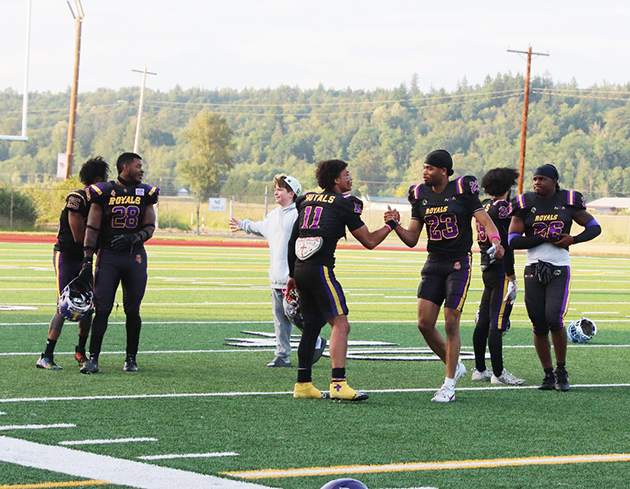
Fielding the ensuing kickoff, he sprinted 75 yards to the house, bursting through multiple tackles. The Royals’ bench erupted, waving goodbye to the stunned Jetts as their season faded with just 15 seconds left. Everett’s defense sealed the deal on the final possession, securing the 18-12 victory in dramatic fashion.
After the game, Royals head coach Boyd Demus reflected on the hard-fought win. “We could have played way better,” he admitted. “It was a hard fight, but we came out with the win. The defense gets an A, the offense pulled it together in the second half, so I’d give them a B. Overall, I’d say it was a B+ effort from my guys. All the hard work paid off.”

Looking ahead to next week’s playoff showdown, Demus acknowledged the challenge ahead. “We face the undefeated Grit City Knights again. Last time we held them until the fourth and just ran out of gas. This time, we’re healthy and ready. We’re looking forward to this match.”
Linebacker Timothy Hill Thomas shared his excitement about advancing. “It feels good to be playing again,” he said. “It’s been a long time. I held it down and we got the dub. We’re ready for what’s next.”
Defensive tackle David Enick added, “I had lots of fun out there. It was awesome. I can’t wait for next week—we face the undefeated team and I think we’ve got them this time.”
The Royals now prepare for their rematch against the formidable Grit City Knights at Franklin Pierce Stadium on Saturday, June 21, at 5:30 p.m. With confidence surging and momentum on their side, Everett will look to dethrone the unbeaten powerhouse and punch their ticket to the championship.
June 14, 2025 syəcəb
Please use the following link to download the June 14, 2025 issue of the syəcəb
Andrew Virgil Johnson
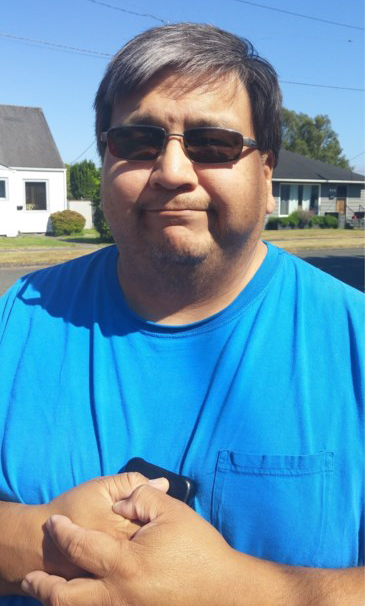
NOVEMBER 14, 1963 – JUNE 1, 2025
Andrew was adopted to Virgil and Evelyn Johnson shortly after birth and was raised in the Church of Jesus Christ of Latter-Day Saints in Royal City, WA. He served his mission in North Carolina, and after returning he moved to Moses Lake, WA, where he met his wife and had two daughters.
After the death of his adopted mother, he started his journey to find his heritage of which he found and was enrolled into the Tulalip Tribes. In 2003 he moved to Tulalip, WA, where he lived and worked until his incarceration in 2018.
He is preceded in death by his parents and siblings. He leaves behind his wife, daughters, and grandson.
A graveside service for Andrew will be held Monday, June 16, 2025 from 11:30 AM to 12:30 PM at Mission Beach Cemetery, Mission Beach Rd, Tulalip Bay, WA 98271.
Fern Lodge ‘a win-win’ for Tulalip and Snohomish County
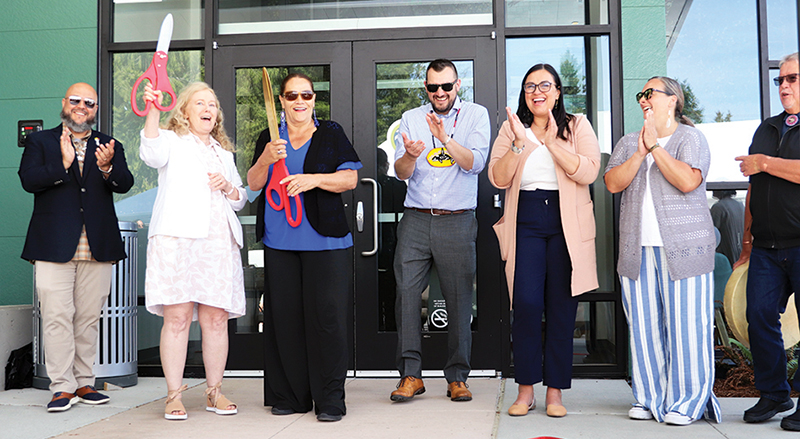
By Micheal Rios, Tulalip News
“It’s with an appreciative heart that we are here today to celebrate the completion of Fern Lodge,” said Chairwoman Teri Gobin at June 6’s ribbon-cutting ceremony. “This behavioral wellness center is a model of collaboration and is intended to increase access to much-needed health care for our Snohomish County communities. There is a lack of mental health resources nationwide. Facilities, like Fern Lodge, are important tools to help those in need during a mental health crisis.”
Fern Lodge Behavior Wellness is a 16-bed in-patient facility that will offer around-the-clock care to its court-ordered residents during their 90- or 180-day treatment plans. This rehabilitative treatment facility will serve individuals who are not involved in the criminal court system and do not need to be hospitalized, but still require additional support to prepare for living independently in their communities.
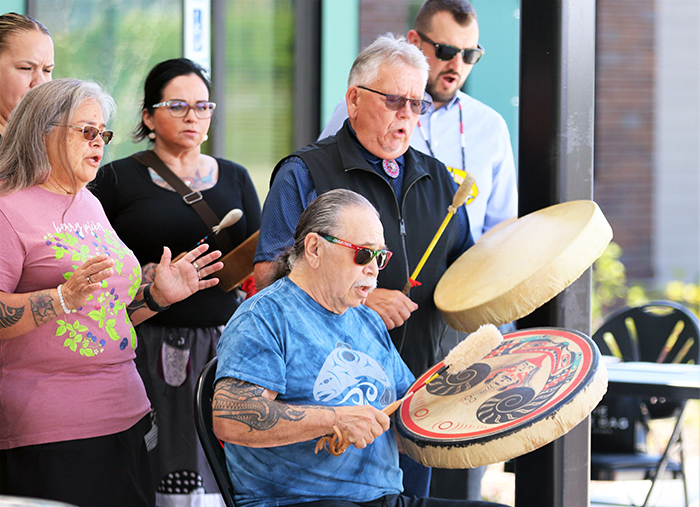
Built by Tulalip, on land owned by Tulalip in Stanwood (kitty-corner from the Healing Lodge), this $35 million qualified capital investment will be operated and maintained by the Washington Health Care Authority. Fern Lodge’s completion represents completion of the final legally required step by the Tribe in order to collect 100% of taxes generated on the Reservation beginning July 1, 2027.
“The Fern Lodge conversation started from negations to settle litigation on a tax-sharing lawsuit between the Tulalip Tribes and the federal government versus the State of Washington and Snohomish County,” explained Chairwoman Gobin. “This dates back to 2019 when then-Governor Jay Inslee requested we negotiate via mediated settlement. A tax-sharing compact was developed that covers the Tribe’s business developments created on our lands. And so today, we celebrate a win-win for Tulalip, Washington State, and the people in our local community.”
A first-of-its-kind facility in Snohomish County, Fern Lodge comes as a response to not only Jay Inslee’s 2018 behavioral health transformation plan, but also to meet the demand for accessible, non-hospitalized inpatient care options, particularly beyond urban hubs.
Snohomish County is one of the largest counties in the state, yet does not have adequate capacity to serve community members with behavioral health needs. As of November 2023, there were only six beds in the county contracted to provide this type of treatment. Now, thanks to Tulalip, there are 16 additional beds committed to the cause.

In attendance to celebrate Fern Lodge’s completion and his 1-month anniversary on Tulalip’s Tribal Council was Ryan Miller. In his previous role as Director of Treaty Rights, he played an instrumental role in getting state law changed and House Bill 2803 passed so that the Governor could enter into tax-sharing compacts with the Tribe.
“I want to acknowledge all the past leaders who committed so much time and energy, really putting their hearts into making this possible. It took decades and decades of fight to get to where we are today, and even this was a compromise,” reflected Ryan. “Ultimately, this is a great example of government-to-government relations and reflects forward-thinking leaders from both the State and the Tribe who came up with this great idea to help deal with the mental health crisis that our communities and country as a whole is facing.”
This facility is for all Snohomish County residents, 18 years and older. However, Tulalip tribal members will be given admission priority. Treatment interventions can vary based on an individual’s need, but in general may consist of one-on-one and group therapy, peer counseling, case management, medication management, and skill building.
“There is a tremendous need for resources to help us heal from intergenerational trauma, so that we, as a people and a society, can embody health and wellness in truly a good way,” said Board of Director Deborah Parker. “Any day we can come together to wrap a relative in care, in love, in deep respect, is a good day. I hope the development of Fern Lodge becomes a model for others to come and visit and to learn from as our Tribe, county, state, and nation continue to address mental health for the benefit of all our relatives.”
Tulalip Clinical Pharmacy now offering free lock bags to its patients

By Kalvin Valdillez, Tulalip News
Sixteen pharmacies across the region are taking part in a new campaign led by the Washington State Health Care Authority (HCA). This includes the Tulalip Clinical Pharmacy, one of two reservation-based pharmacies, the other is Kirk’s Pharmacy in Puyallup. The campaign is known as ‘Starts with One’ and is part of the HCA’s new Pharmacy Safe Storage program. Starts with One aims to prevent the misuse of prescription drugs and opioid overdose by providing lockable canvas bags to patients of the participating pharmacies.
Said Tulalip Clinical Pharmacy Director, Kelvin Lee, “We enrolled in the department of health’s program where they provide free bags to the pharmacy, because they found that more than half of the people who abuse narcotics start off by using someone else’s prescriptions. So, the whole idea behind the program is to give our patients lock bags so they can secure their prescriptions and protect it from other people’s access, so they don’t have the chance to try it. I think it’s a wonderful program.”
Kelvin explained that upon filling an opioid prescription, the patients are given a detailed explanation about the program. The patients then have the option to take part, and if they do decide to participate, they must sign a pledge card before receiving their free bag. The bag itself is a medium-sized black zip-up pouch with a lock in the upper left corner. The patient can simply store their medication in the bag, close it, and lock it up. They are given two keys per bag, one to have on-hand and the other to keep in safe location in case of a misplacement.
The campaign officially kicked off at the beginning of spring and according to the HCA website, there have already been 3,255 patients who were informed about the program, of which 1,877 people pledged to lock up their meds, and a total 1,742 bags have been distributed across all sixteen locations over the past few months.
In the latest research conducted by Snohomish County Overdose Prevention, there were 46.1 opioid overdose deaths per 100,000 population in our county in 2023. That is staggering compared to the statewide average of 33.7 opioid overdose deaths per 100,000 people that same year. However, thanks to an increased effort to provide education and resources countywide, much like this new campaign, the preliminary data shows Snohomish County’s death rate by opioid overdose of 46.1 per 100,000 population decreased to 40.6 in 2024.

“This program is focused on patients who are taking narcotics because that’s the biggest category,” Kelvin shared. “It’s not just about addiction or abuse; a lot of people die from overdose because they don’t know what they are taking. They’re just taking their grandma’s prescription or their parent’s prescription and have no idea what it is. And they overdose. The lock bags keep everyone safe. And the best part is it’s free. And we can make a really big impact with this campaign.”
In addition to the black lock bags, the pharmacy also received slightly smaller lock bags from the Tulalip Health Clinic. These bags were purchased with grant funding and are meant to be distributed to Tribal members only, whereas the HCA bags can be dispersed to any patient of the Tulalip Clinical Pharmacy. The Health Clinic’s lock bags are white and feature the Tulalip Tribes logo along with a selection of resources printed on the front, such as the phone number to a crisis team and a substance abuse disorder line, as well as the website address to the For Our Native Lives program.
“We have hundreds of bags, and we are not going to stop providing them until we give them all away,” Kelvin stated. “We want to encourage people to take one, especially elders who are taking a lot of medications so they can secure their prescriptions. We look at this like a community service. We definitely want to offer it to those with a prescription, but also to anybody who needs to secure their medications because any prescription can be dangerous.”
Taking part in the Starts with One campaign is just the latest effort by the Tulalip Clinical Pharmacy to help combat the opioid epidemic on the reservation. Last summer, the pharmacy introduced the first reservation-based Narcan distribution box, which is a success so far and has been utilized regularly throughout its first year.
After thoroughly explaining the campaign and the free lock bags with Tulalip News, Kelvin switched gears before the interview concluded. He used this time to discuss another new program that the pharmacy has recently implemented known as the Over the Counter (OTC) program. Kelvin detailed, “We have a brand-new program for Tulalip members. We had a similar program before called the Nix program. It was like a hidden benefit where we give free lice shampoo treatment to Tulalip members. We just recently expanded the program to include six other items: a tablet cutter, 7-day pill organizer, touchless thermometer, acetaminophen (liquid or tablet), antibacterial ointment, and hand sanitizer. Again, this is only for Tulalip members. We think these are safe enough for everyone, that’s how we decided on this list. So, anyone who needs these items, they can come in and those are free of charge.”
For more information about the Starts with One campaign, the free lock bags, or the OTC program, please contact the Tulalip Clinical Pharmacy at (360) 716-2600 or visit within their normal operating hours.
Chad Michael Orr
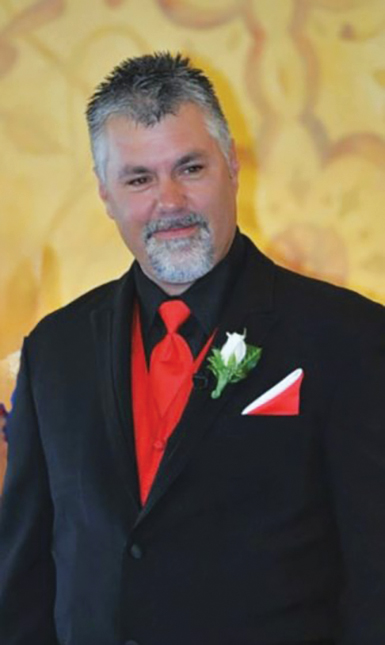
MAY 6, 1972 – JUNE 4, 2025
Chad Orr, 53, passed away on June 4, 2025 from a rare and aggressive cancer, leaving behind a legacy of unwavering love, kindness, and strength. He was a devoted husband, loving father, proud Papa, doting son, caring brother, and a loyal friend to many. To know Chad was to know true selflessness, compassion, and joy.
Chad was born and raised in Arlington and graduated from high school there in 1990. He was a proud member of Tulalip Tribes and enjoyed participating in native traditions. Chad’s friendships and love for people encompassed all aspects of his life, from those he met as a 33-year member of the Local 32 Plumbers and Pipefitters Union to those he was thrilled to see while operating his Boom City fireworks stand. Each and every friendship was special to him.
Chad married the love of his life in 2013, and together they lived a life full of laughter, love, and many adventures. Traveling became one of their favorite pastimes and they were able to explore 25 countries on 6 continents together. He loved his family fiercely, treating his stepchildren as his own and beaming with pride when introducing his grandsons. Being Papa was his greatest joy—he was playful, present, and deeply cherished.
Chad was our rock, our Superman, and our light. He showed us what unconditional love looks like and how to find good even in the darkest of times. He will be missed beyond words and loved passed space and more.
He is survived by his wife Tracy, three children Austin (Dawna) Orr, Kayla Land (Jared Elias), Kyle Land, grandsons Cypress, Cayson, Dawson, Liam, Jo, grandma Beverly Gobin, parents Ted (Pam) Orr, Valda Gobin (Herb Spires), brothers Rick (Sherrie) Orr, Caleb (Branda) Orr, Josh (Crystal) Orr and many aunts and uncles, nieces and nephews, cousins, and friends. He is now reunited with his brother Teddy.
A celebration of Chad’s life will be held at one of his favorite places, Tulalip Resort Casino on Saturday, June 21st at 5pm in the Orca Ballroom. In lieu of cut flowers, please consider bringing a live plant.
June 7, 2025 syəcəb
Please use the following link to download the June 7, 2025 issue of the syəcəb